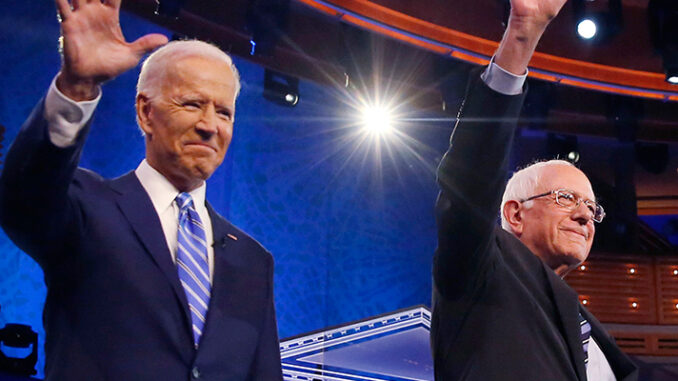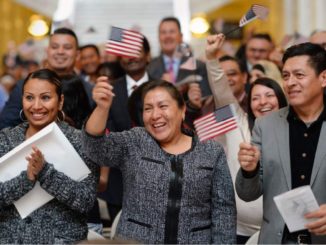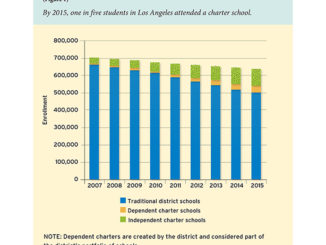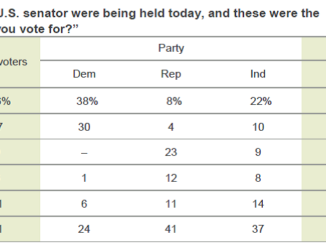
by Mindy Romero
California became a player in the 2020 presidential election when the state moved its primary from June to March. The timing meant California voters could help select the Democratic nominee before the national primary ceased to be competitive.
Many hoped the timing and competitiveness of the election would help turn out California voters who usually do not take part in primaries, making the voting electorate more representative of the population. But a breakdown of the numbers of voters who turned out for the primary remind us of the entrenched barriers to voting that historically underrepresented groups continue to experience. And it shows us that much more needs to be done to encourage and support voter turnout.
In the lead up to Election Day, California did receive more media coverage and benefited from more campaign visits, some in areas of the state we almost never see visited by candidates in a presidential primary. But, overall, California did not see the increase in attention from candidates that many voter advocacy and community groups had hoped.
In the end, Sen. Bernie Sanders, the candidate who invested in California far more than any other Democratic challenger, won the state. But California’s choice didn’t win the night; former Vice President Joe Biden beat Sanders in 10 out of the 14 states holding primaries on Super Tuesday.
So how high was turnout in California’s competitive primary?
At 38.4%, the official eligible voter turnout – the percentage of adult citizens who voted – increased nearly 4 percentage points over turnout in the 2016 presidential primary, the most recent comparable election. Further, turnout was the second highest primary turnout California has seen in the past 38 years. The highest was 39.5% in 2008, when Hillary Clinton faced off with Barack Obama.
However, voters of color and young people did not see the same increase in eligible turnout that the general population experienced. In fact, disparities in turnout rates by race, ethnicity and age actually worsened.
Our analysis of county voter data provided by Political Data Inc. found that eligible turnout of Latino voters in California was 22.9%, down slightly from 2016 by about half a percentage point. Asian American turnout was 21.8%, up by nearly 3 percentage points. In contrast, the turnout of all voters who are not Latino or Asian American (a breakdown of data specifically for whites and African Americans is not available) increased substantially from 42.5% to 49.5%. In California, this population group is 83.4% white.
In an election where there was much speculation that turnout of youth would increase, we saw eligible turnout of those aged 18-24 at 16.1%, down from 17.1% in 2016. Turnout of Latino and Asian-American youth was even lower.
These data tell us that the overall turnout increase California saw in the 2020 primary was driven by older voters who are not Latino or Asian American.
Lower turnout for Latinos, Asian Americans and youth translate into their underrepresentation among those casting a ballot compared to their proportions of the overall population eligible to vote. Latinos comprise 30.9% of the state’s eligible voter population, but only 19% cast primary ballots, a decrease from 19.8% in 2016. Youth made up 14.5% of the population eligible to vote, but only 6.3% of those who actually voted, down from 7.2% in 2016. Asian Americans, who make up 14.6% of eligible voters, were a larger share of those casting ballots this year, 8.6% versus their share of 7.1% in 2016.
Strikingly, voters who are not Latino or Asian American comprised 72.4% of those casting a ballot in the primary while they make up only 54.4% of all eligible voters.
Given that the Latino eligible voting population has grown significantly since 2016 – by a million – the decrease in their percentage of the primary vote is particularly troubling and a product of the widened gap in turnout rates between Latinos and non-Latinos.
In every election, voters are older, wealthier and disproportionately white when compared to the population at large. Voters of color, including African Americans, Latinos and Asian Americans consistently experience lower turnout rates.
There are significant consequences from these disparities in turnout. Elections have real policy and resource outcomes that affect us all. This has never been clearer than right now.
In communities across this state and nation, we are witnessing a movement for racial justice. Whole sections of the public are demanding the elimination of institutional racism in our criminal justice system. The reality is that the likelihood of seeing real change depends on the policy positions of elected officials.
Just as our nation’s shameful past of discriminatory policies like Jim Crow and neighborhood redlining were created by elected leaders of that time, today our elected officials are responsible, directly or indirectly, for the policies that perpetuate institutional racism.
Of course, voting is not the only step to affecting real and lasting change but it is a part of a necessary set of actions. When it comes to the November election, once again, Californians will be voting on a slate of candidates and issues that were selected by a voting electorate that does not fully represent them.
Mindy Romero is a political sociologist and director of the California Civic Engagement Project at the Price School of Public Policy at the University of Southern California, [email protected]. She wrote this commentary for CalMatters. Romero has also written about voter suppression and inclusion when rebuilding California’s economy.



